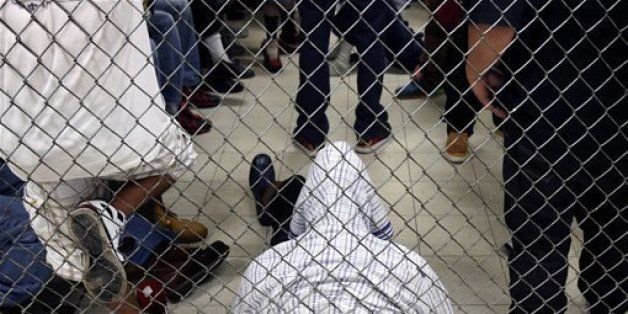
NEW YORK (AP) — More than 90 percent of New York City jail inmates in solitary confinement aren't getting their legally mandated one hour of daily recreation time outside their cells, according to a report released Wednesday by the city agency that oversees the jails.
Many inmates sent to solitary confinement at Rikers Island jail for violating rules go multiple days in a row locked in their 7- by 12-foot cells without access to outdoor recreation cages, found the review by the agency, the New York City Board of Correction.
"This hour of recreation is not a mere pleasure for prisoners," the board wrote. "For individuals who are otherwise confined alone in small, spare cells, this hour of fresh air and sunlight and exposure to other people is essential for their mental and physical health and essential to promoting safety."
The study comes as the board writes new minimum standards to be released in November that will change when and how solitary is doled out, especially for mentally ill and adolescent inmates.
It also was released days after federal prosecutors in Manhattan unveiled the results of their multiyear investigation into how teenagers are jailed on Rikers, finding that among other things, adolescents are too often subjected to solitary confinement, especially mentally ill 16- to- 18-year-olds.
Each day, about 600 inmates of the roughly 11,500 that make up the nation's second-largest jail system are placed in punitive segregation, a 23-hour lock-in that government lawyers said was essentially the same as solitary confinement. Close to 1,000 more owe time in solitary confinement but aren't locked in because there's not enough space, Commissioner Joseph Ponte said last month.
But the oversight board found that access to recreation time, which inmates aren't required to go to, is elusive in large part because guards assigned to escorting inmates to and from recreation frequently fail to notify prisoners in the morning to sign up.
There are also too few recreation guards, and an inefficient escort system that limits the number of inmates who can be taken to the 32 outdoor cages, which themselves are empty, devoid of even metal bars that could be used for pull-ups, the report found. A spokesman for the head of the correction officers' union didn't respond to a request for comment.
A Department of Correction spokesman said Ponte was aware that access to recreation is a problem and said the commissioner, as part of an agenda to reduce violence, had "already begun reviewing plans to improve the provision of recreational services to inmates."
Ponte, who was appointed in March, has vowed to turn around what he has described as a deeply troubled jail system. He won praise for his work in Maine, where he reduced the use of solitary confinement by two-thirds in the state's prisons.
But use of the practice in New York has become a point of contention between Ponte and the oversight board, which was highly critical of his decision in June to move dozens of mentally ill inmates into solitary units without first getting sign-off from clinicians, as city rules dictate. Ponte had argued that many of the inmates who owe time in solitary but are wait-listed because there isn't enough space are responsible for surging levels of violence in city jails.
The report was based on a survey of inmates in Rikers' largest solitary unit over five months in 2013 as well as a review of 14 randomly selected days of recreation time detailed in logbooks.
